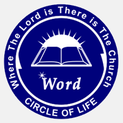Introduction to the Teachings of Swedenborg
|
Seek TruthIntroductionA Closer LookDiving Deeper
Further Reading |
| The Lord's New Church Which is Nova Hierosolyma | Seek Truth |
|
Phone Number:
215-947-2727 Email: [email protected]rg Mailing Address: The Lord’s New Church which Is Nova Hierosolyma 1725 Huntingdon Road Huntingdon Valley, PA 19006 U.S.A |
Copyright © 2016 The Lord's New Church which Is Nova Hierosolyma
Translate our site:
